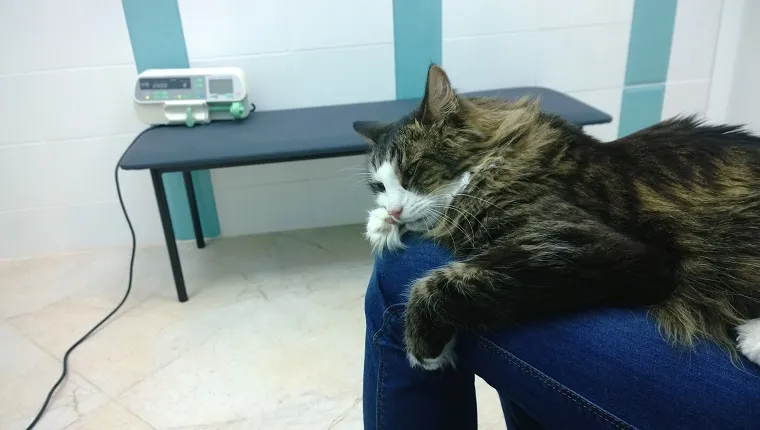Cyanosis in cats is a medical condition that can result in a kitty’s skin and some of their mucus membranes turning blue. The main cause is red blood cells not carrying enough oxygen around the body.
Many cases are the result of an underlying condition that involves the heart or respiratory system. Sadly, the prognosis is often poor, so early medical intervention is essential.
If you see signs that your cat’s skin might be turning blue, then you must consult your veterinarian for a proper diagnosis and course of treatment. Here’s what you should know about the symptoms, causes, and treatments of cyanosis in cats.
Symptoms Of Cyanosis In Cats
Cyanosis in cats presents a range of symptoms. Some of the most common symptoms include:
- Difficulties breathing
- Heart sounding muffled
- Heart murmurs
- Cough that sounds like a honk
- Seeming weaker than normal
Causes Of Cyanosis In Cats

The cause of cyanosis in cats often relates to the respiratory system. Some of the most common causes that involve the respiratory system include:
- Born with heart abnormalities
- Paralysis of the larynx
- Asthma
- Pneumonia
- Trachea collapsing
- Parasites found in the lungs
- Inhaling smoke
- Lungs being bruised
Beyond the respiratory system, some of the other most frequent causes include:
- Damage to the muscles (especially the diaphragm)
- Exposure to poisons
- Brain tumors
- Suffering a stroke
- Brain trauma
Veterinary Treatments
If your cat starts to develop cyanosis, then your veterinarian will first of all want to use oxygen therapy to stabilize their condition. Next, they’ll carry out a full physical examination, including blood, urine, and electrolyte tests, as well as an electrocardiograph (EKG).
Additionally, vets usually examine the voice box and the lungs to look for any abnormalities.
When the vet confirms their diagnosis, treatment will focus on correcting the underlying condition. In some cases, this might involve your cat undergoing a surgical procedure.
In other cases, vets may recommend medication. As always, if your vet prescribes medicine for your kitty, it is imperative that you stick to the precise dosage and frequency instructions, along with completing the full course of medication.
While your cat recovers at home, it can be useful to limit their exercise and physical activity. Additionally, keep an eye out for any of the original symptoms returning, and schedule frequent checkup visits with your vet.
Has your cat ever developed cyanosis? How did your vet help your kitty recover? Tell us all about it in the comments below.









